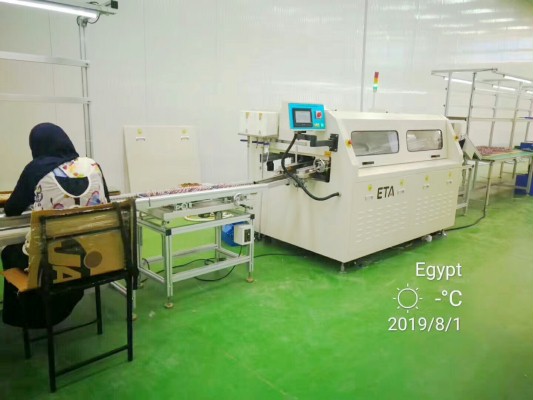DIP Soldering Works, Why Use DIP Soldering?

There are two main soldering methods in the SMT industry-reflow and wave soldering.
Wave soldering involves passing solder along a preheated board. Circuit board temperature, heating and cooling curves (non-linear), soldering temperature, waveform (uniform), solder time, flow rate, circuit board speed, etc. are all important factors affecting soldering results. All aspects of circuit board design, layout, land shape and size, heat dissipation, etc. need to be carefully considered to obtain good soldering results.
ETA SMT manufacturers can provide lead DIP wave soldering, lead-free wave soldering machine and selective wave soldering machine according to your needs.
Obviously, wave soldering is an aggressive and demanding process-so why use this technique?
It is used because it is the best and cheapest method available, and in some cases the only practical method. In the case of through-hole components, wave soldering is usually the method of choice.
Reflow soldering refers to the use of solder paste (a mixture of solder and flux) to connect one or more electronic components to the contact pad, and then control the heating to melt the solder to achieve permanent bonding. A reflow furnace can be used , Infrared heating lamps or hot air guns for welding. Reflow soldering has lower requirements for pad shape, shadow, board orientation, temperature profile (still very important), etc. For surface-mount components, it is usually a very good choice-solder and flux mixtures are pre-applied with stencils or other automated processes, the components are placed in place, and are usually fixed by solder paste. Adhesives can be used in demanding situations, but are not appropriate with through-hole parts-reflow is often not the method of choice for through-hole parts. Composite or high-density circuit boards can use a mix of reflow and wave soldering. Lead-only components are mounted on one side of the PCB (called the A side), so wave soldering can be performed on the B side. Before the TH part is inserted, the component can be reflow soldered on the A side before the TH part is inserted. Additional SMD parts can then be added to the B side for wave soldering with the TH parts. Those who are keen on high wire soldering can try using a complex mixture of solders with different melting points, allowing B-side reflow before or after wave soldering, but this is very rare.
Reflow soldering technology is used for surface mount parts. Although most surface-mount circuit boards can be manually assembled using a soldering iron and solder wire, the process is slow and the resulting circuit board may not be reliable. Modern PCB assembly equipment uses reflow soldering specifically for large-scale production. Pick and place machines place components on boards that are coated with solder paste. The entire process is automated.
❙ DIP Soldering Video